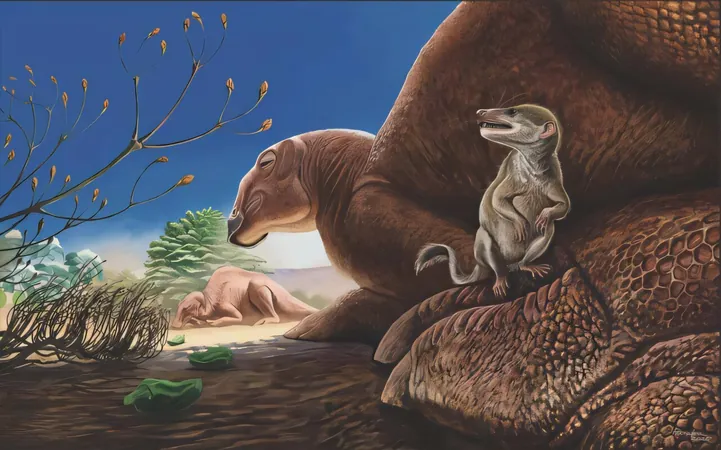
Exciting Discovery: New Mammal Species from the Age of Dinosaurs Found in Mongolia's Gobi Desert!
2025-04-29
Author: Daniel
An Unprecedented Find in the Gobi Desert
In a groundbreaking discovery, researchers have unearthed the fossil of a previously unknown mammal species from the Late Cretaceous period, estimated to be between 100 to 66 million years old, in Mongolia's Gobi Desert. This mouse-sized creature has been aptly named Ravjaa ishiii, a tribute to the revered 19th-century Buddhist monk Dulduityn Danzanravjaa and the late Kenichi Ishii, former director of the Hayashibara Museum of Natural Sciences.
Deep Dive into Cretaceous Life
This monumental work, published in the esteemed journal Acta Palaeontologica Polonica, features a collaboration between researchers from Okayama University of Science and the Mongolian Academy of Sciences. During a 2019 expedition to the fossil-rich Baynshire Formation, the team stumbled upon a tiny, one-centimeter partial lower jaw. After careful analysis, they identified the specimen as a member of the ancient Zhelestidae family.
A Unique Species Emerges
What makes Ravjaa ishiii stand out are its unusually tall molars and peculiar jaw shape, setting it apart from its relatives in the Zhelestidae family. This discovery marks the first evidence of a zhelestid in Mongolia, suggesting these mammals thrived far from ancient coastlines, challenging previous assumptions about their habitat.
Revealing the Ecological Landscape
The age of the Baynshire Formation coincides with the early proliferation of flowering plants on land. The robust molars of Ravjaa ishiii indicate that these early mammals may have been nurturing an appetite for seeds and fruits, hinting at an evolutionary adaptation to the new resources provided by angiosperms.
Hope for Future Discoveries
Lead researcher Tsukasa Okoshi expressed optimism about this find, stating, "The COVID-19 pandemic delayed our publication, but we are thrilled to highlight the significance of this specimen. We aim for this research to inspire further studies on small vertebrate fossils from the same area and era, paving the way to uncover the rich biodiversity, including dinosaurs, that once roamed the Gobi Desert during its dinosaur epoch."
A Miraculous Gift from the Desert
Professor Mototaka Saneyoshi of Okayama University described the sensation of finding such a diminutive fossil in the sprawling Gobi Desert as miraculous. This discovery not only enhances our understanding of mammalian evolution but also paints a vivid picture of life during a period dominated by dinosaurs.

 Brasil (PT)
Brasil (PT)
 Canada (EN)
Canada (EN)
 Chile (ES)
Chile (ES)
 Česko (CS)
Česko (CS)
 대한민국 (KO)
대한민국 (KO)
 España (ES)
España (ES)
 France (FR)
France (FR)
 Hong Kong (EN)
Hong Kong (EN)
 Italia (IT)
Italia (IT)
 日本 (JA)
日本 (JA)
 Magyarország (HU)
Magyarország (HU)
 Norge (NO)
Norge (NO)
 Polska (PL)
Polska (PL)
 Schweiz (DE)
Schweiz (DE)
 Singapore (EN)
Singapore (EN)
 Sverige (SV)
Sverige (SV)
 Suomi (FI)
Suomi (FI)
 Türkiye (TR)
Türkiye (TR)
 الإمارات العربية المتحدة (AR)
الإمارات العربية المتحدة (AR)